From the Big Apple and Long Island to the Adirondack Mountains and the shores of the Great Lakes, this geographically diverse state is wonderful for birdwatching.
One interesting family of birds to look out for is the Icteridae or new world blackbirds. Though often considered pests, these birds are interesting, and some—especially those which are near-threatened or vulnerable, need our help and protection.
Today, we’ll take a look at some of the blackbirds in New York (and one non-native blackbird). We’ll learn how to identify them and when you might see them in the state!
European Starling
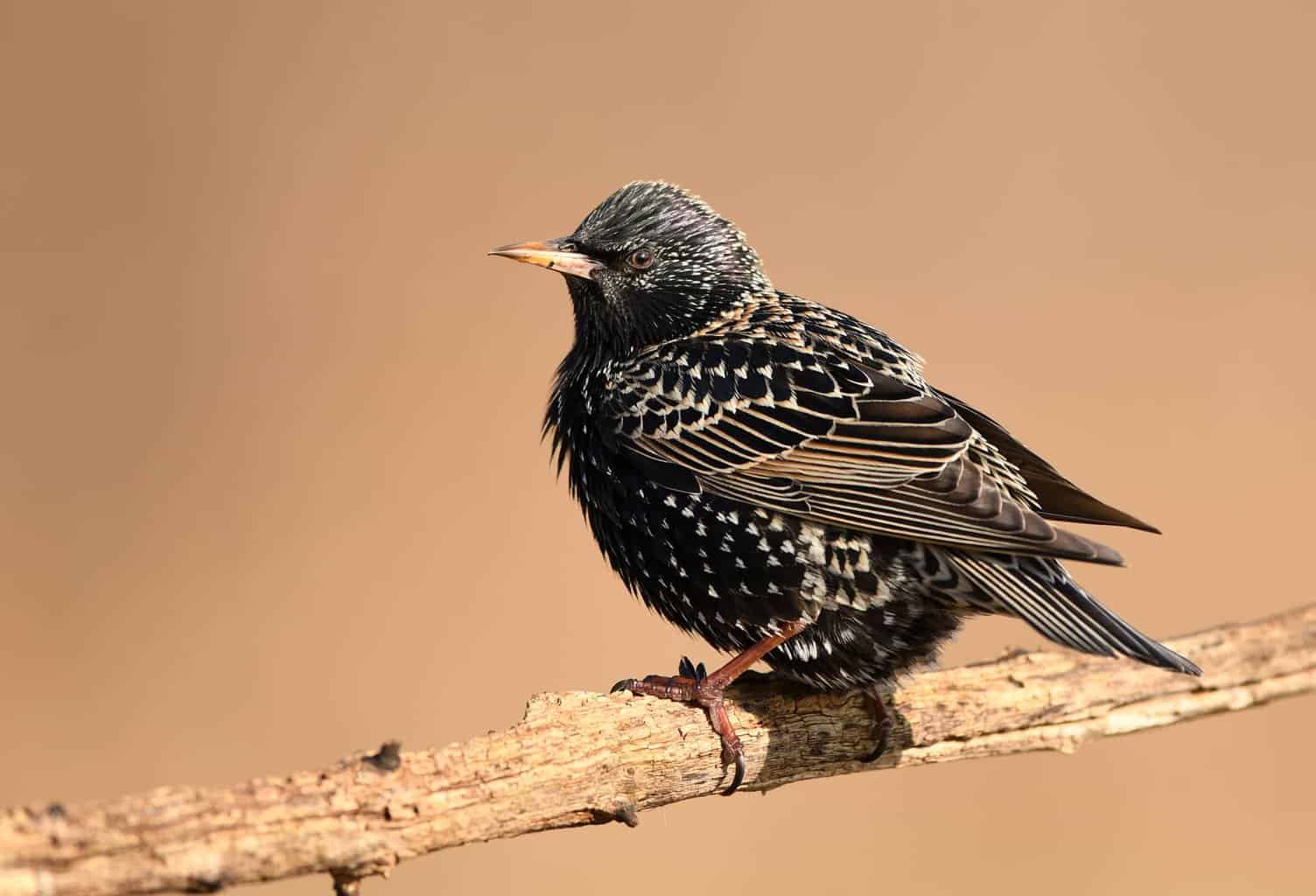
- Scientific Name: Sturnus vulgaris
- Length: 7.9 – 9.1 in (20 – 23 cm)
- Weight: 2.1 – 3.4 oz (60 – 96 g)
- Wingspan: 12.2 – 15.8 in (31 – 40 cm)
We start with the only non-native blackbird species on this list. European starlings are not a new world blackbird, but since their introduction to the United States, have become one of the most common songbirds seen here in New York.
These medium-sized blackbirds can be seen in the state year-round.
These stocky blackbirds may look black or dark from a distance, but close-up, iridescent shades of purple, green and blue can be spotted in their feathers.
Though often considered a pest, the huge murmurations of these birds are an astonishing wildlife spectacle.
Red-Winged Blackbird
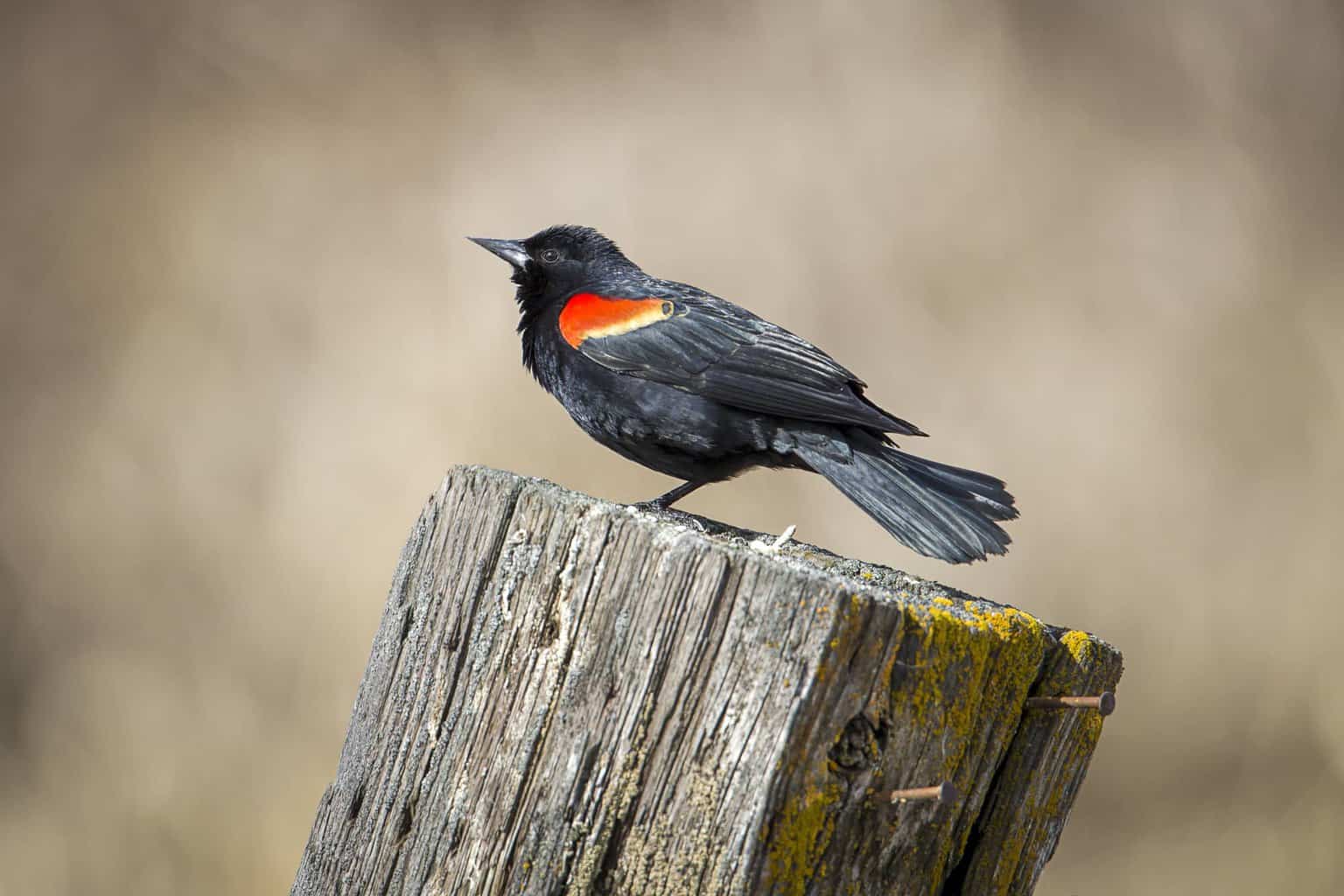
- Scientific Name: Agelaius phoeniceus
- Length: 6.7 – 9.1 in (17 – 23 cm)
- Weight: 1.1 – 2.7 oz (32 – 77 g)
- Wingspan: 12.2 – 15.8 in (31 – 40 cm)
Red-winged blackbirds are the species of new world blackbirds that you are most likely to see in New York over the summer months.
They nest and breed in New York over the summer, arriving in March. Most depart by around November, but a small number remain here year-round.
The males of the species are easily identifiable. They have red patches on their wings which stand out starkly against their glossy black plumage. The females are less distinctive, having a streaky brown coloration.
Common Grackle
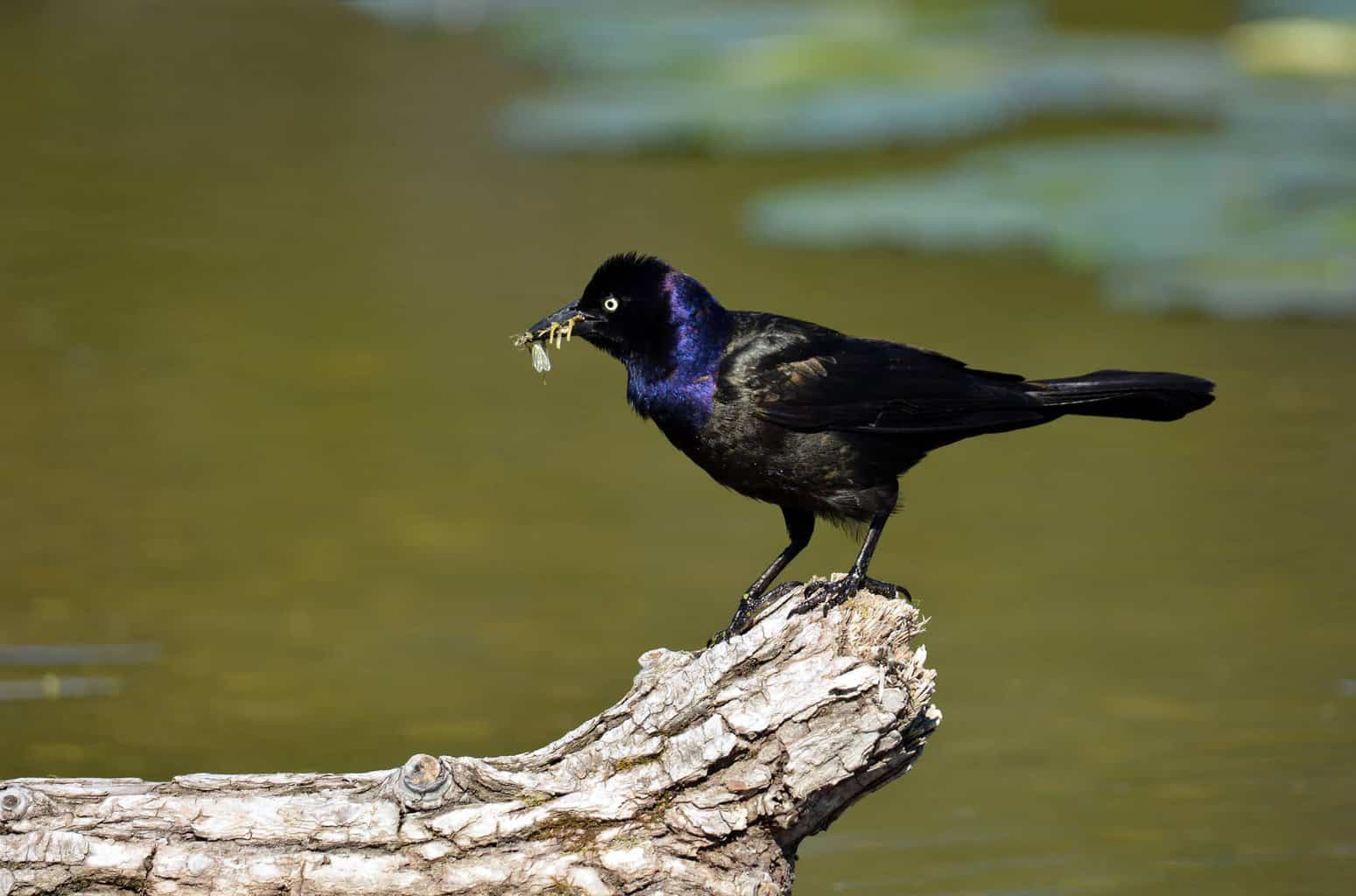
- Scientific Name: Quiscalus quiscula
- Length: 11.0 – 13.4 in (28 – 34 cm)
- Weight: 2.6 – 5.0 oz (74 – 142 g)
- Wingspan: 14.2 – 18.1 in (36 – 46 cm)
The common grackle is a near-threatened species. However, this is still the second most common blackbird to spot here during the summer months.
These birds too spend their summer breeding in the state. They arrive in March migration from their wintering grounds further south. Most will depart by October, though again, some individuals won’t migrate and may remain here through the rest of the year.
These medium-sized blackbirds have glossy black feathers, and the males have a little more iridescence than the females. They can be distinguished from other blackbirds by their taller height and slightly longer tails.
Brown-Headed Cowbird
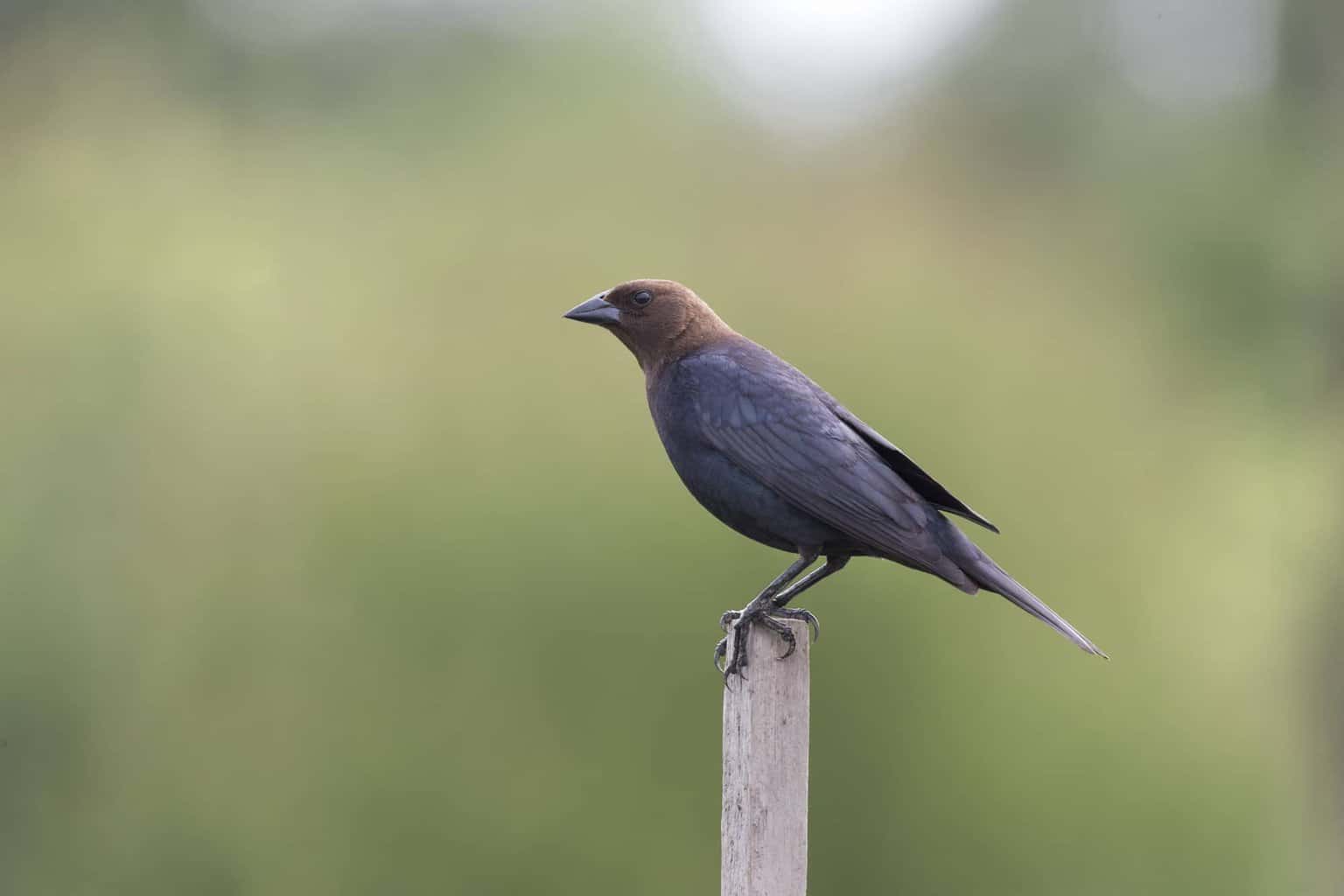
- Scientific Name: Molothrus ater
- Length: 76.3 – 8.7 in (19 – 22 cm)
- Weight: 1.3 – 1.8 oz (42 – 50 g)
- Wingspan: 14.2 in (36 cm)
Brown-headed cowbirds are also a species that lives and breeds in New York during the summer months. They arrive in March and begin to depart in July. Most migrate south before colder weather arrives.
But again, a few will remain here year-round.
The male birds have glossy black bodies, brown heads, and short tails. The females are more diminutive and are slightly streaky gray-brown all over.
Baltimore Oriole
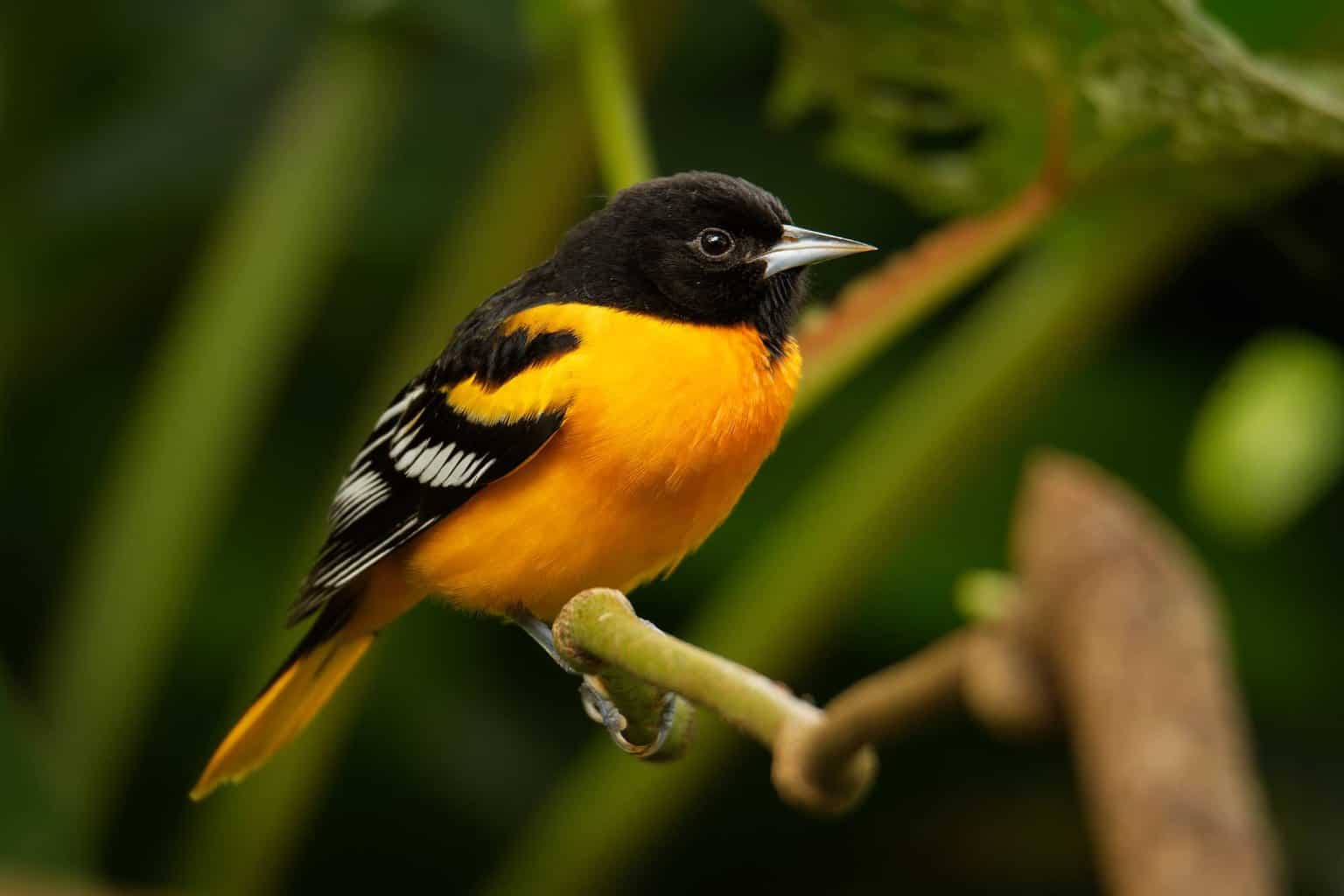
- Scientific Name: Icterus galbula
- Length: 6.7 – 7.5 in (17 – 19 cm)
- Weight: 1.1 – 1.4 oz (30 – 40 g)
- Wingspan: 9.1 – 11.8 in (23 – 30 cm)
The fourth most likely blackbird to see in New York in summer are Baltimore Orioles. These also breed in the state and are most likely to be seen between May and October.
Most Baltimore Orioles will migrate south for winter though, as with the other species above, some will remain year-round.
The males and females differ considerably in their appearance. Male Baltimore Orioles are bright orange and glossy black, with white wing bars, while the females have yellowish slight streaking underneath and brown-gray and brown-yellow on their wings and backs.
Bobolink
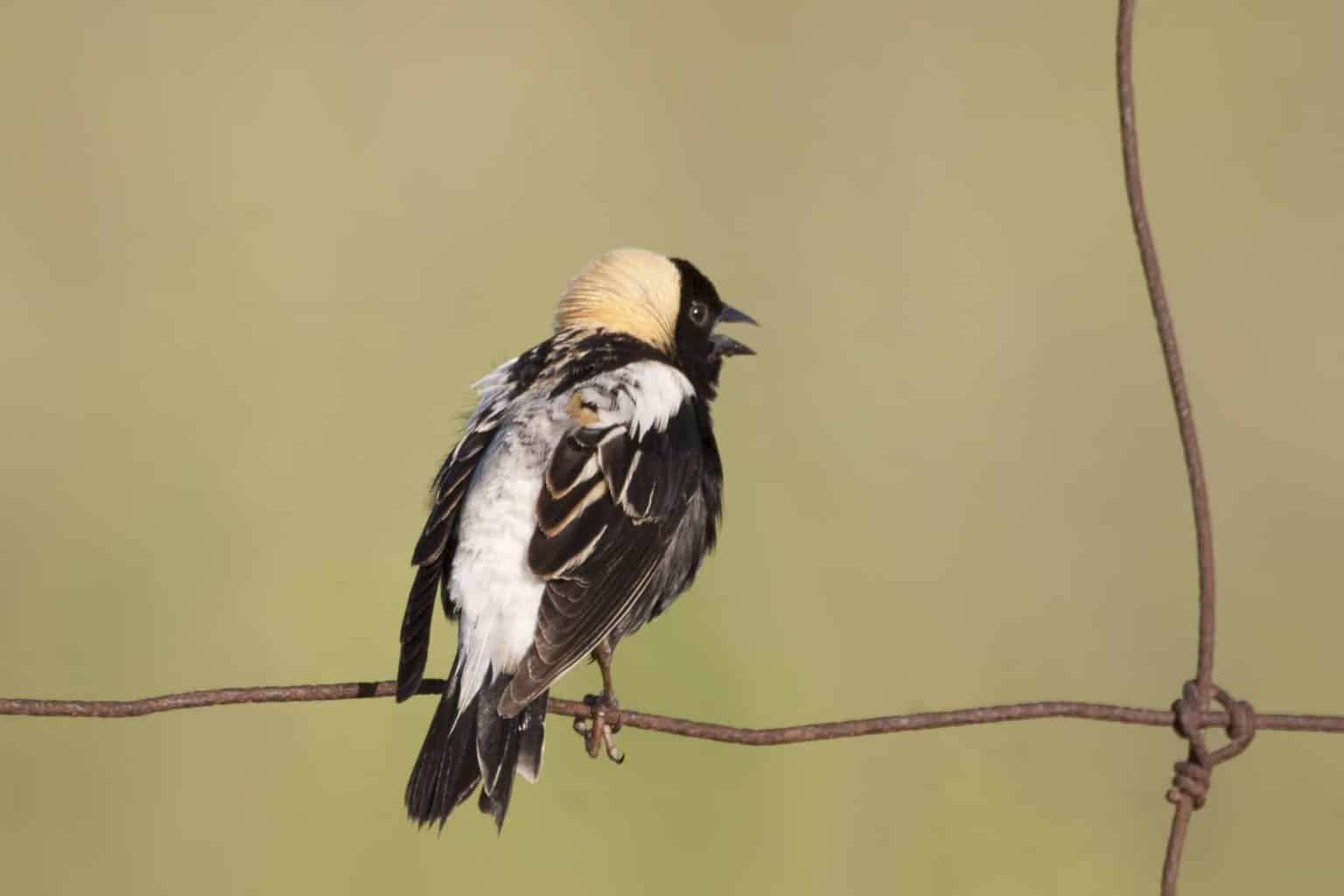
- Scientific Name: Dolichonyx oryzivorus
- Length: 5.9 – 8.3 in (15 – 21 cm)
- Weight: 1.0 – 2.0 oz (29 – 56 g)
- Wingspan: 10.6 in (27 cm)
Bobolinks are somewhat more rarely spotted but are seen in summer birdwatchers’ checklists while they stay in the state to breed.
They are most commonly spotted between April and November and will migrate southwards for the winter months.
While in their breeding plumage, the males have white backs, glossy black bellies, and striking patches of yellow ‘hair’ on their heads. Non-breeding males and females have brown slight streaking, with dark around their eyes and stripes on their crowns.
Eastern Meadowlark
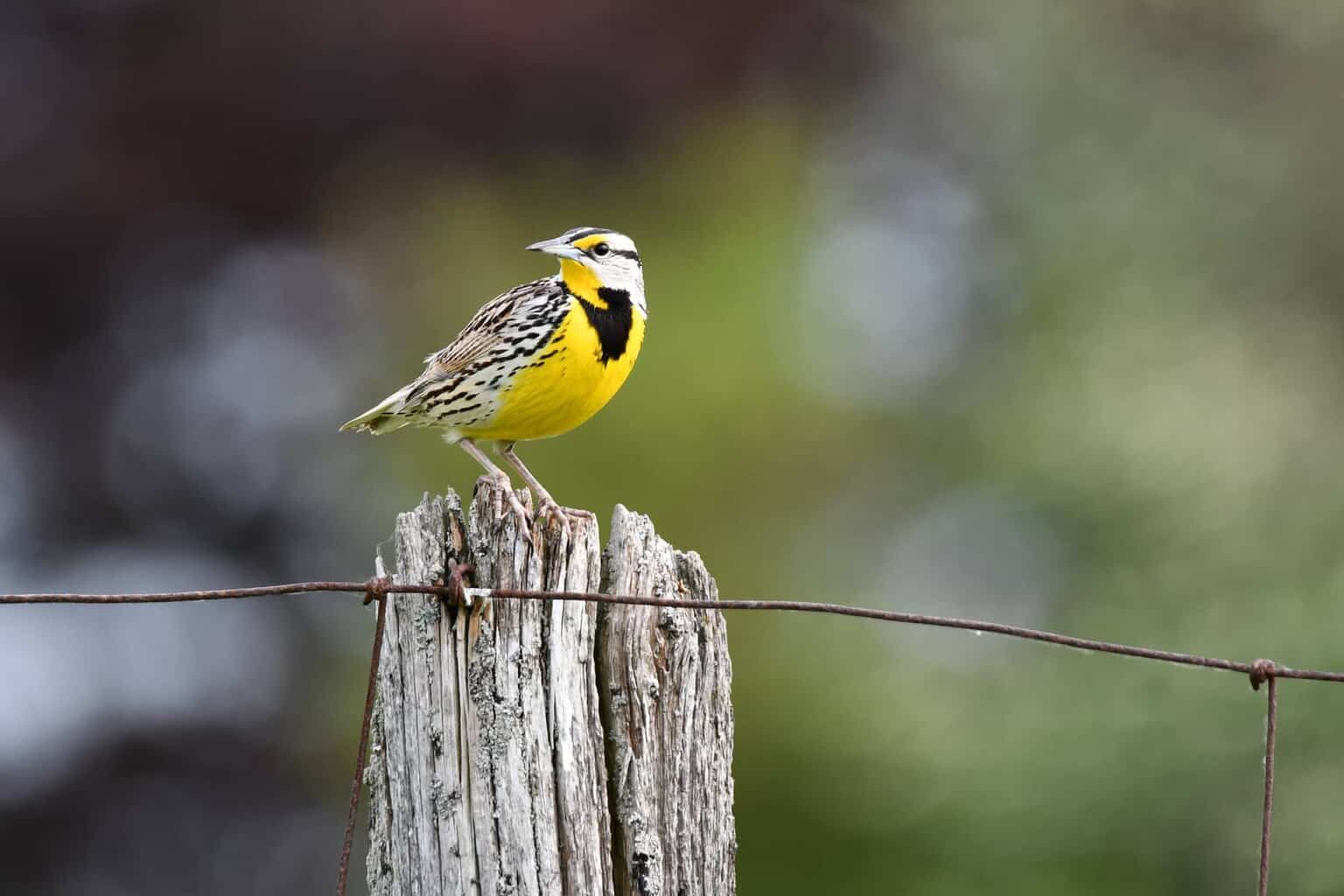
- Scientific Name: Sturnella magna
- Length: 7.5 – 10.2 in (19 – 26 cm)
- Weight: 3.2 – 5.3 oz (90 – 150 g)
- Wingspan: 13.8 – 15.8 in (35 – 40 cm)
These melodious yet sadly near-threatened species spend the breeding season in New York. They typically remain in the state between March and November, though may also sometimes hang around through the coldest months.
These songbirds are bright yellow underneath and brown and glossy black on top, with distinctive black bands across their chests. They have varied flute-like songs.
Rusty Blackbird
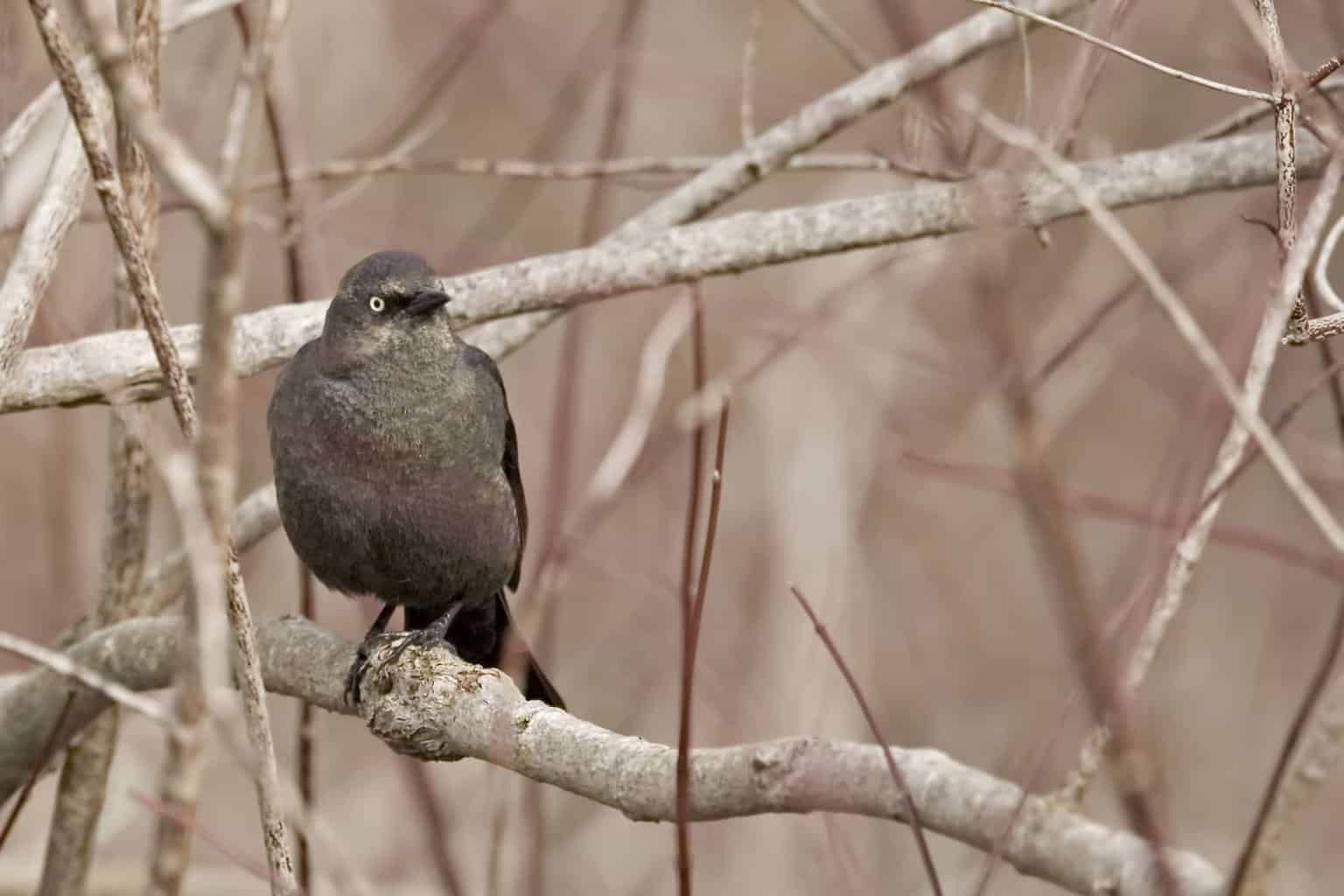
- Scientific Name: Euphagus carolinus
- Length: 8.3 – 9.8 in (21 – 25 cm)
- Weight: 1.7 – 2.8 oz (47 – 80 g)
- Wingspan: 14.6 in (37 cm)
This is a vulnerable species, whose numbers have sadly declined dramatically in recent decades. Numbers have fallen precipitously in the last 40 years.
However, they are spotted in New York.
Potentially, they can be glimpsed in the state year-round, but are most commonly spotted either in spring migration (between March and May) or the fall (October or November) as they make their way south.
The males are dark glossy black in summer and take on the ‘rusty’ hue that gives them their name in the winter months. The females are brown-gray, with rust-colored edges to their feathers.
Orchard Oriole
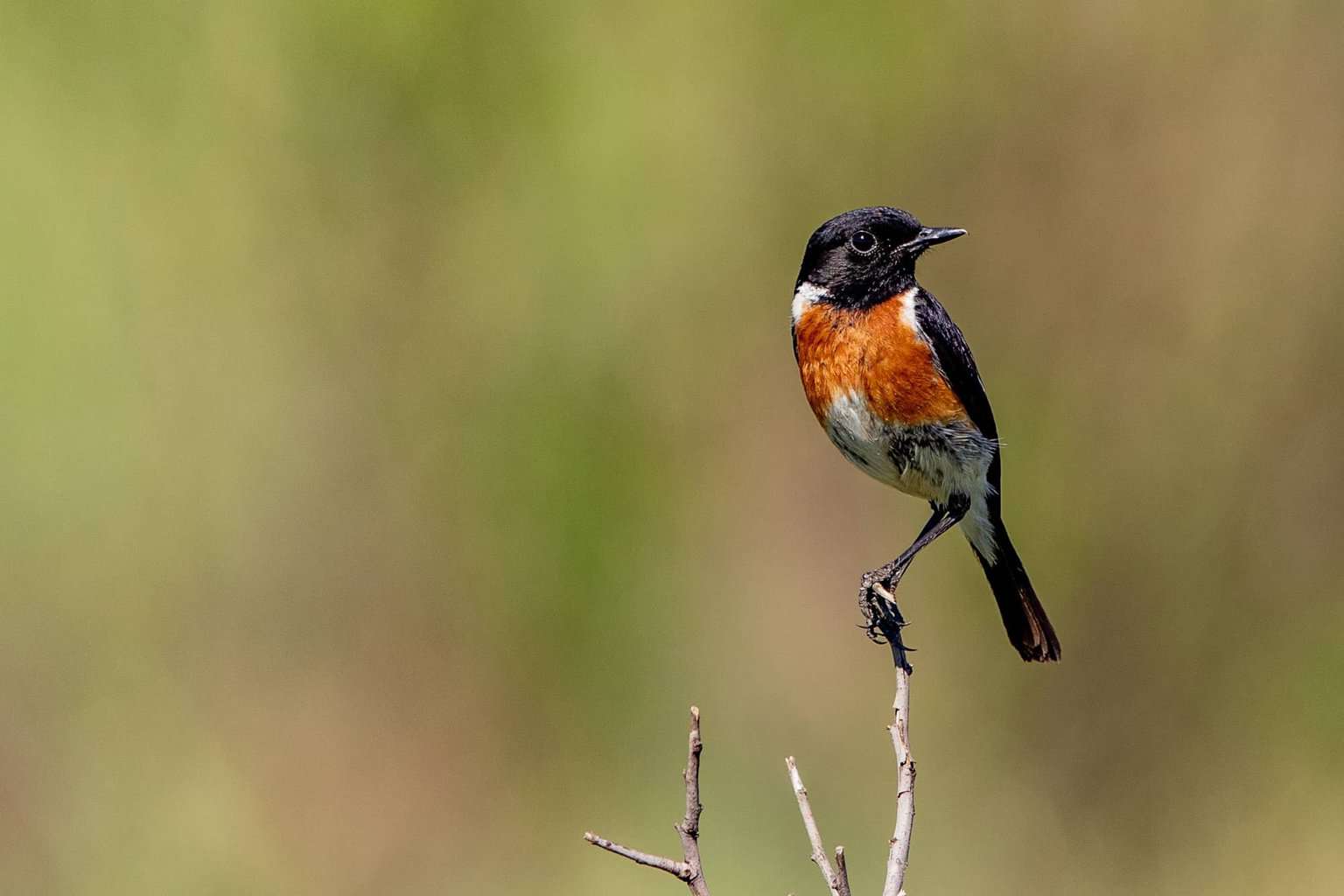
- Scientific Name: Icterus spurius
- Length: 5.9 – 7.1 in (15 – 18 cm)
- Weight: 0.6 – 1.0 oz (16 – 28 g)
- Wingspan: 9.8 in (25 cm)
You are most likely to spot Orchard Orioles in New York between May and August, though they may arrive from April, and some may stay until around November.
They will breed in the state and appear on a small number of summer birdwatchers’ checklists.
There is a great disparity between the appearance of the males and females of this species. The males are glossy black on the back and red underneath, while the females are green-yellow overall, darker on their backs and wings, with white wing bars.
You may be lucky enough to spot them on hummingbird feeders, or feeding on native berries or fruit in your garden.
Boat-Tailed Grackle
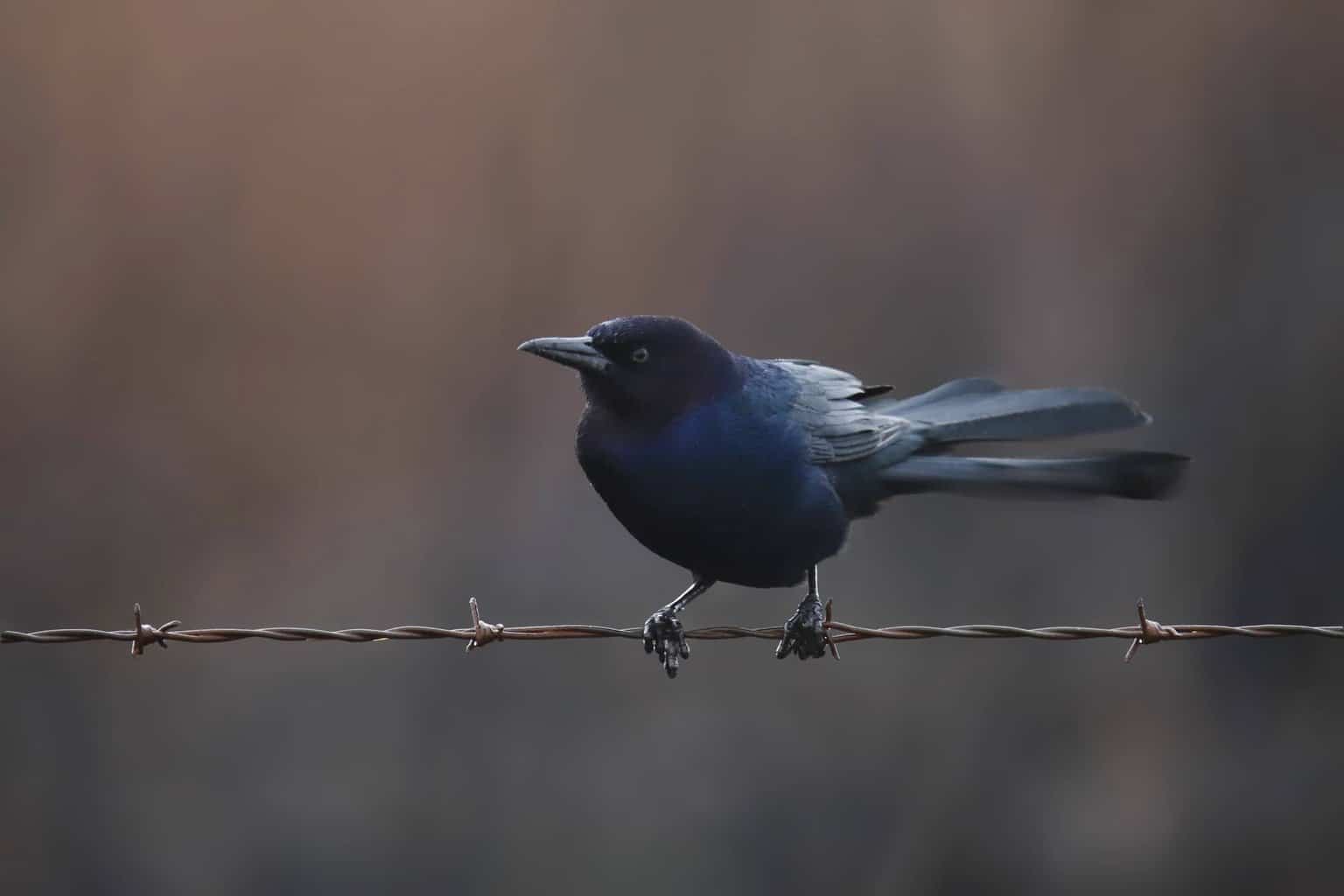
- Scientific Name: Quiscalus major
- Length: 10.2 – 14.6 in (26 -37 cm)
- Weight: 3.3 – 8.4 oz (93 – 239 g)
- Wingspan: 15.3 – 19.7 in (39 – 50 cm)
Though these birds are not very common in New York State, those living around New York City and Long Island may occasionally spot them along the coast.
They typically live further south, in Florida and along the Gulf Coast, but do sometimes venture this far north along the coast and have been spotted in the south of New York State.
The males of this species are large and glossy black, with long tails, long legs, and long, pointed bills. The females are only half their size and are brown in color. They are slightly darker on top and paler underneath.
Final Thoughts
There have been sightings of other blackbirds in the state. For example, accidental vagrants such as yellow-headed blackbirds and western meadowlarks have been spotted here.
But the list above accounts for the blackbird species that you are most likely to see in New York.

